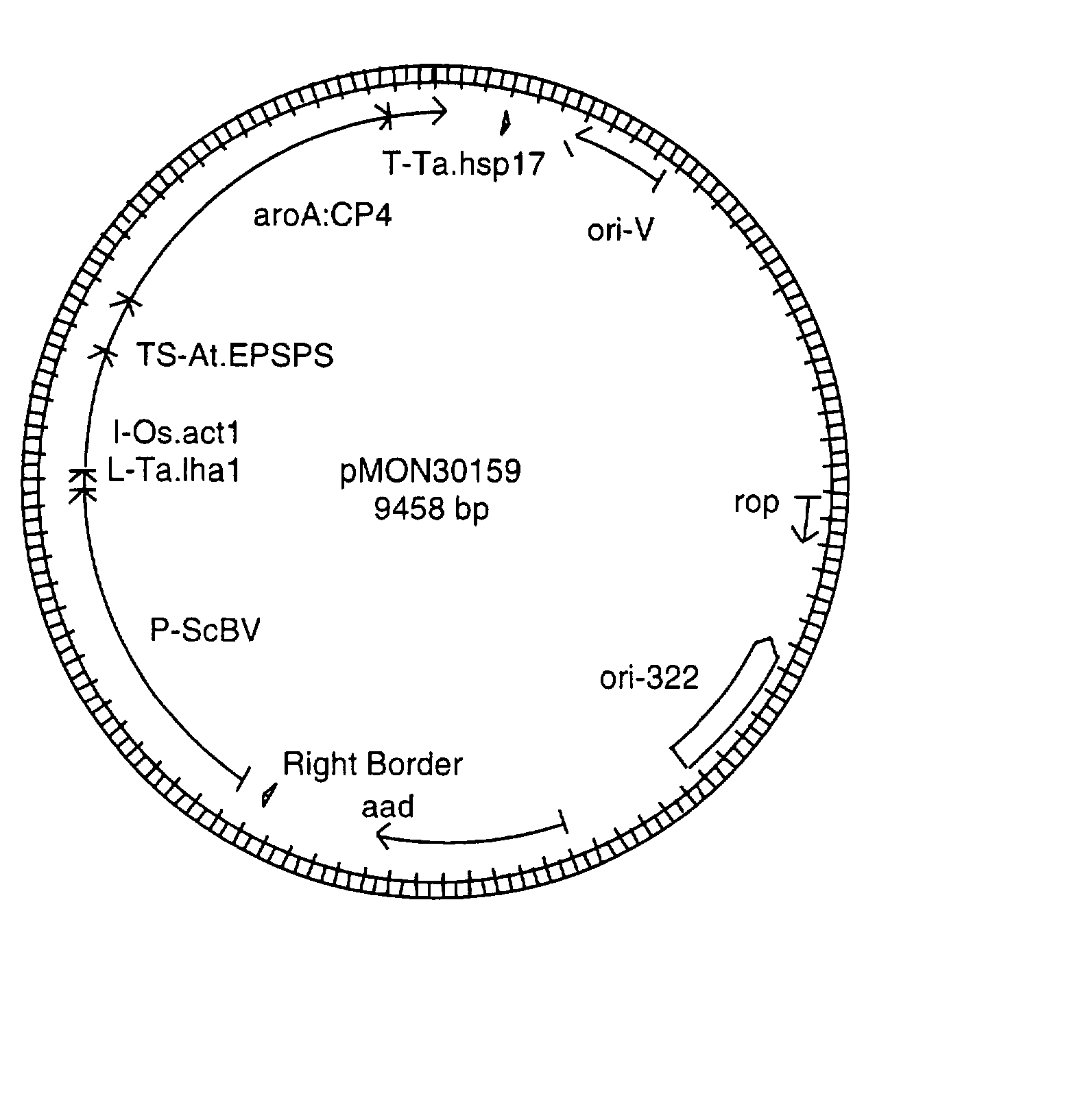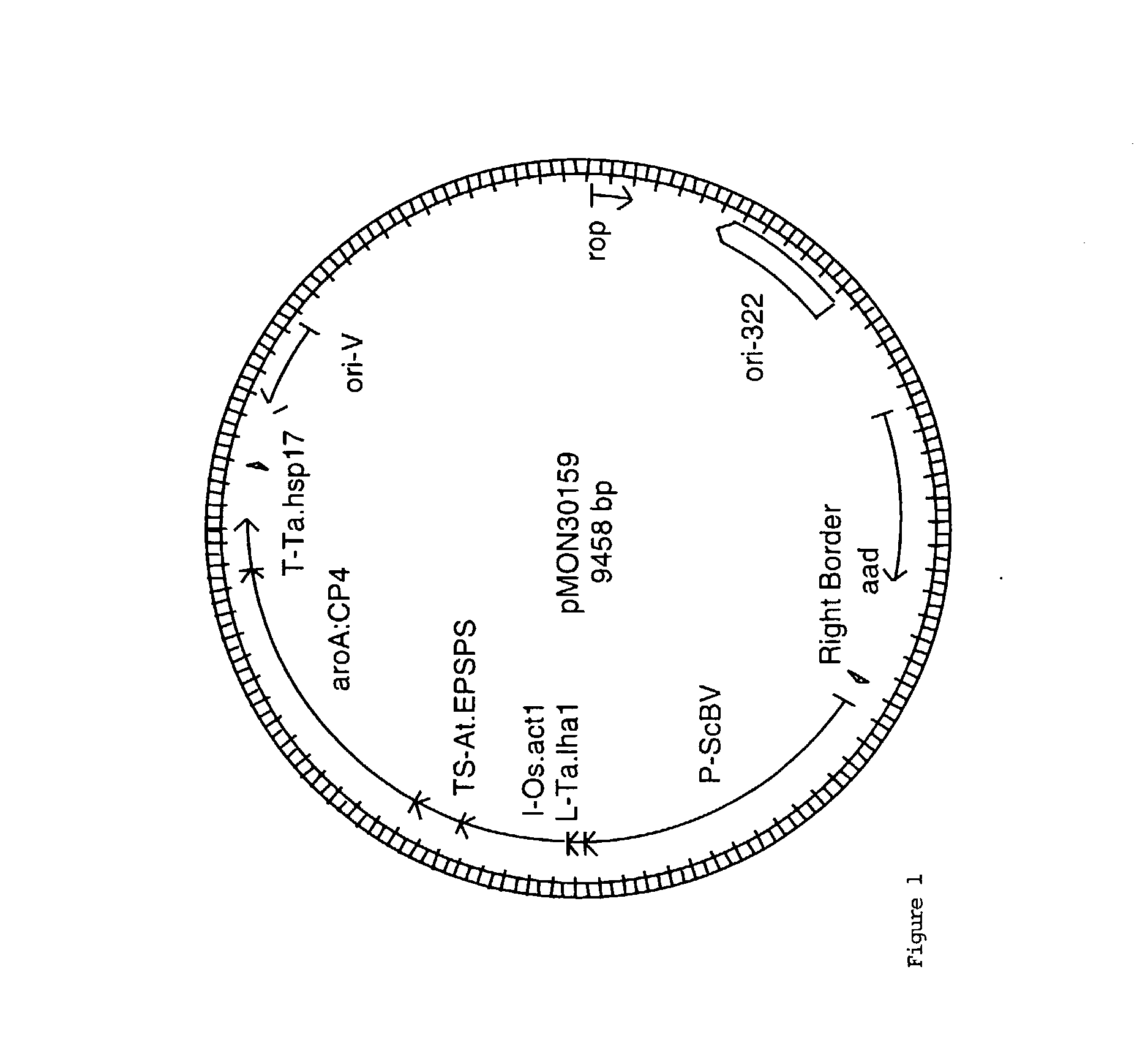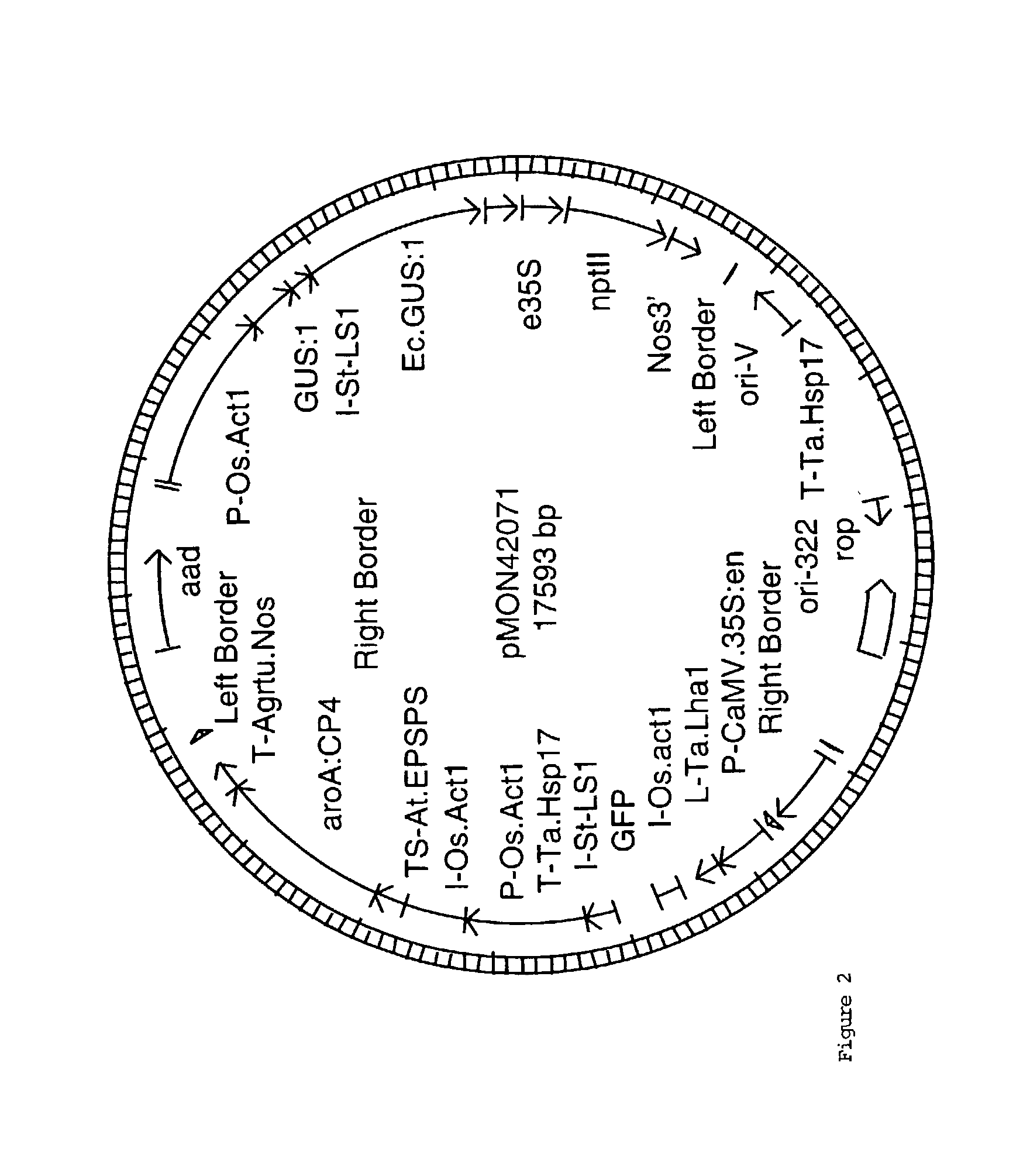Efficiency agrobacterium-mediated wheat transformation method
a technology of agrobacterium and agrobacterium, applied in the field of plant biotechnology, can solve the problems of limited insertion of dna, fragmentation of inserted dna, and inability to achieve high-capacity production of economically important plants, and achieve stable germline transformation, high te, and the effect of doubling the transformation efficiency of plants regenerated from wheat immature embryos
- Summary
- Abstract
- Description
- Claims
- Application Information
AI Technical Summary
Benefits of technology
Problems solved by technology
Method used
Image
Examples
example 1
Plasmid Vector Construction
[0051] Plasmid vectors were constructed using standard molecular biological techniques known to one of ordinary skill in the art. A number of Agrobacterium-mediated plant transformation vectors have been described (Klee and Rogers, 1989). Briefly, the plant transformation vectors described herein comprise one or more nucleic acid sequences including but not limited to one or more T-DNA border sequences to promote the transfer of nucleic acid molecules into the plant genome, replication elements, a selectable marker gene for glyphosate and one or more gene(s) of interest. The basic features of the vectors used in the Examples are summarized in Table 1 and are listed as follows: promoter / coding sequence / 3"-untranslated region.
[0052] The abbreviations in the table are described as follows: The CaMV.35S:en (e35S) promoter is a modification of the 35S promoter derived from the 35S RNA of cauliflower mosaic virus (CaMV) which contains a duplication of the -90 to...
example 2
[0054] Transformation Using Precultured Immature Embryos (PCIEs) of Wheat Explant preparation
[0055] Immature embryos of wheat (Triticum aestivum L) cv Bobwhite were isolated from the immature caryopsis (wheat spikelets) 12-15 days after pollination, and cultured on CM4C (Table 2) for 1-8 days, most typically for 4-6. The embryos without embryogenic callus were selected for Agrobacterium inoculation.
[0056] [t1]
2TABLE 2 Supplemental Components in Basal Media.sup.1 Components CM4 CM4C MMS0 2C MMS0C 2,4-D(mg / L) 0.5 0.5 0.2 --Picloram (mg / L).sup.2 2.4 2.4 Maltose (g / L) 40.0 40.0 40.0 40.0 Glutamine (g / L) 0.5 0.5 Magnesium Chloride (g / L) 0.75 0.75 Casein Hydrolysate (g / L) 0.1 0.1 MES (g / L) 1.95 1.95 1.95 Ascorbic Acid (mg / L).sup.2 100.0 100.0 100.0 Gelling Agent (g / L).sup.3 2(P) 2(P) 2(G) 2(G) .sup.1All media contain basal salts (MS basal salts) and vitamins (MS vitamins) from Murashige and Skoog (1962). The pH in each medium was adjusted to 5.8. .sup.2Filter-stenlized and added to the me...
example 3
Use of M7 Medium for Preculture
[0057] M7 medium was based on the regular preculture medium CM4C, but the amount of MS salts was doubled from the standard concentration and the picloram concentration was increased from 2.4 mg / L to 4 mg / L. The results from the experiments of both selection on glyphosate and selection with nptII(see Example 13) showed that better embryogenic callus was produced and the efficiency was increased when immature embryos were precultured on M7 medium (Tables 3a and 3b).
[0058] [t3]
3TABLE 3a Improvement of transformation efficiency of using M7 medium with glyphosate selection Exp. Treatments Embryo # Events Efficiency % 1 Control 250 8 3.2 1 M7 250 21 8.4 2 Control 250 19 7.6 2 M7 250 20 8.0 3 Control 200 9 4.5 3 M7 300 25 8.33 4 Control 270 13 4.8 4 M7 245 10 4.08 5 Control 240 3 1.25 5 M7 360 18 5 6 Control 300 5 1.67 6 M7 300 6 2.00 7 Control 82 1 1.22 7 M7 187 7 3.74 8 Control 70 0 0 8 M7 75 4 5.3 9 Control 150 8 5.3 9 M7 150 8 5.3 10 Control 260 1 0.3 10 ...
PUM
| Property | Measurement | Unit |
|---|---|---|
| concentration | aaaaa | aaaaa |
| concentration | aaaaa | aaaaa |
| time | aaaaa | aaaaa |
Abstract
Description
Claims
Application Information
 Login to View More
Login to View More - R&D
- Intellectual Property
- Life Sciences
- Materials
- Tech Scout
- Unparalleled Data Quality
- Higher Quality Content
- 60% Fewer Hallucinations
Browse by: Latest US Patents, China's latest patents, Technical Efficacy Thesaurus, Application Domain, Technology Topic, Popular Technical Reports.
© 2025 PatSnap. All rights reserved.Legal|Privacy policy|Modern Slavery Act Transparency Statement|Sitemap|About US| Contact US: help@patsnap.com



